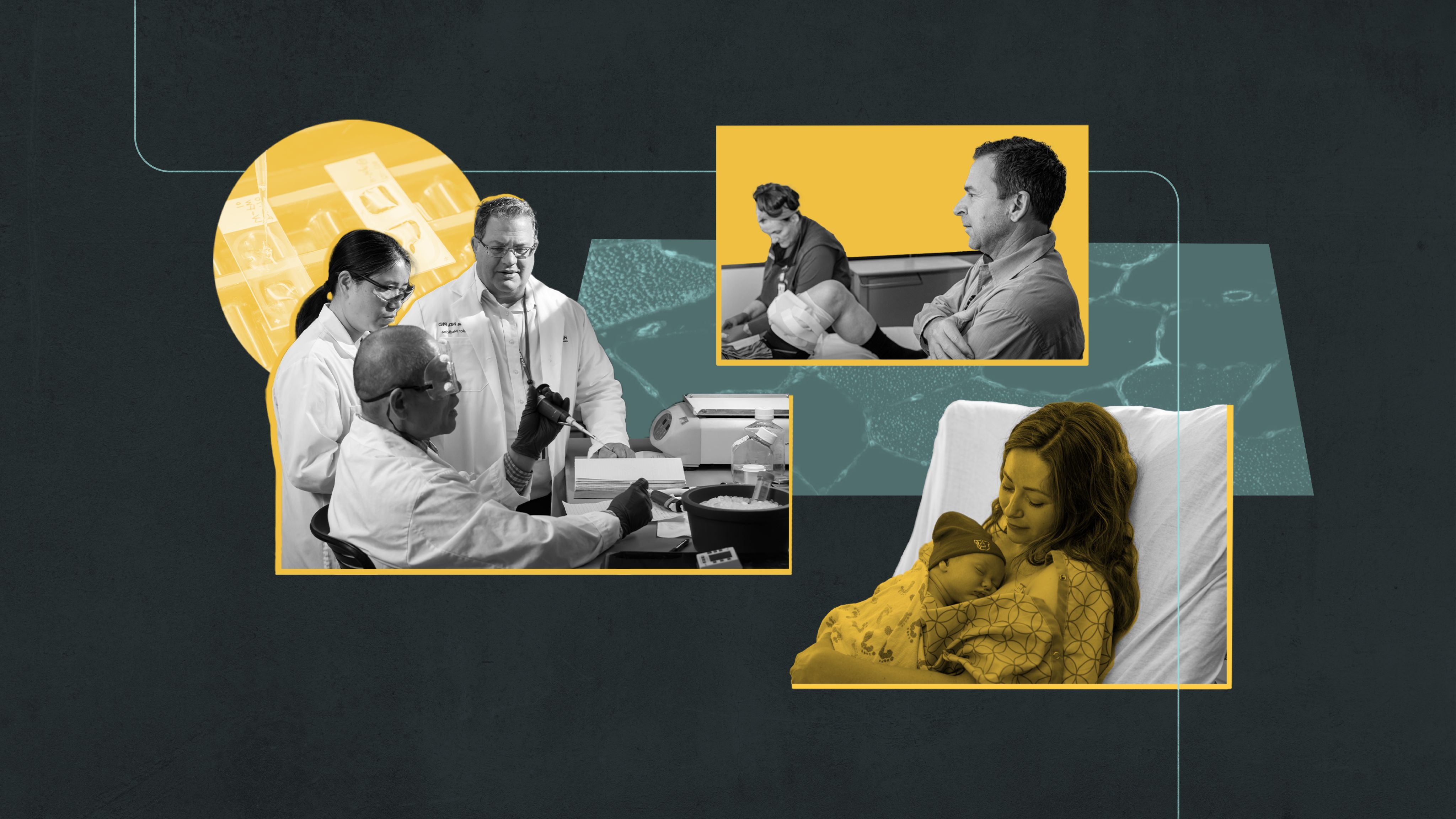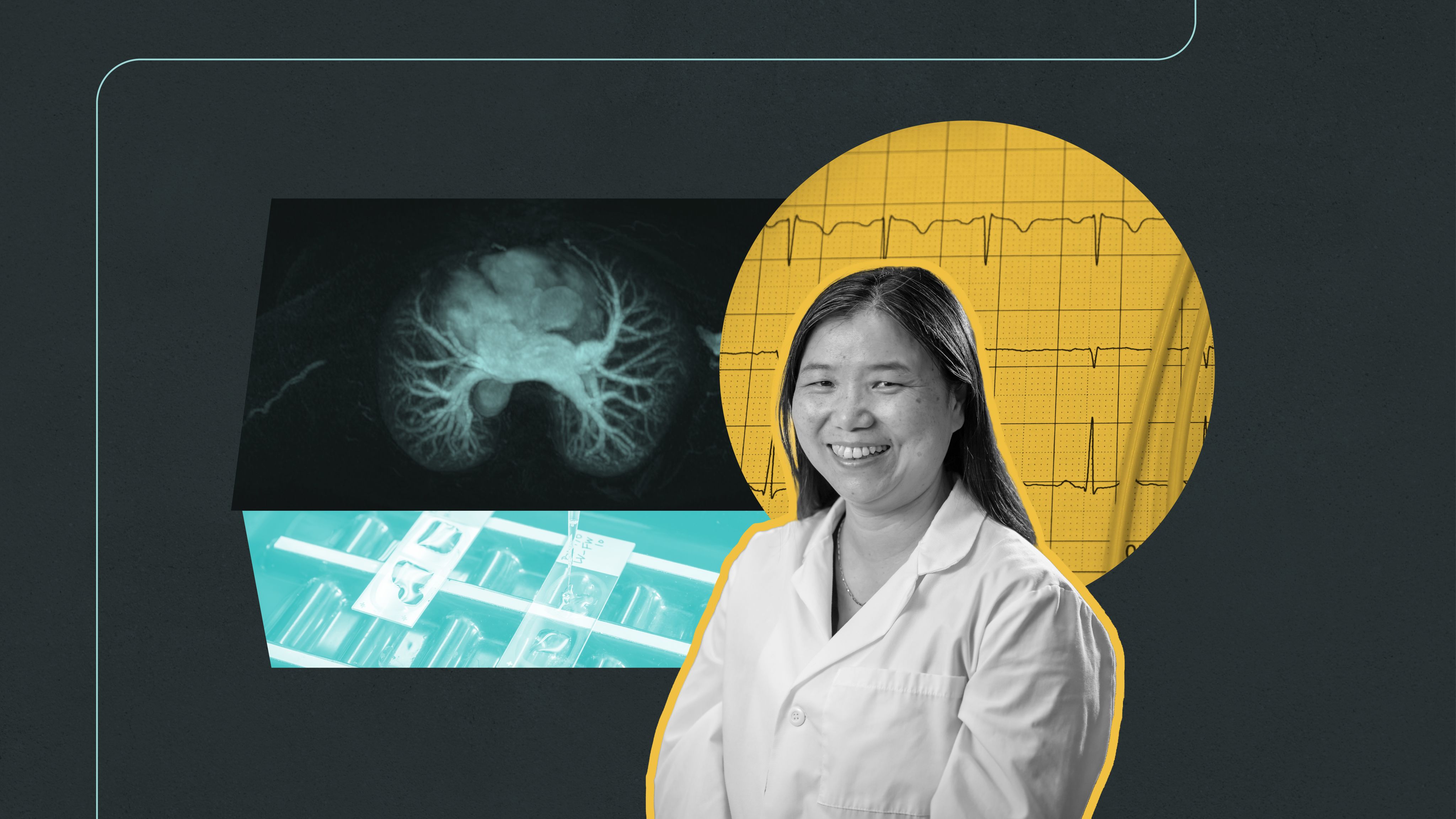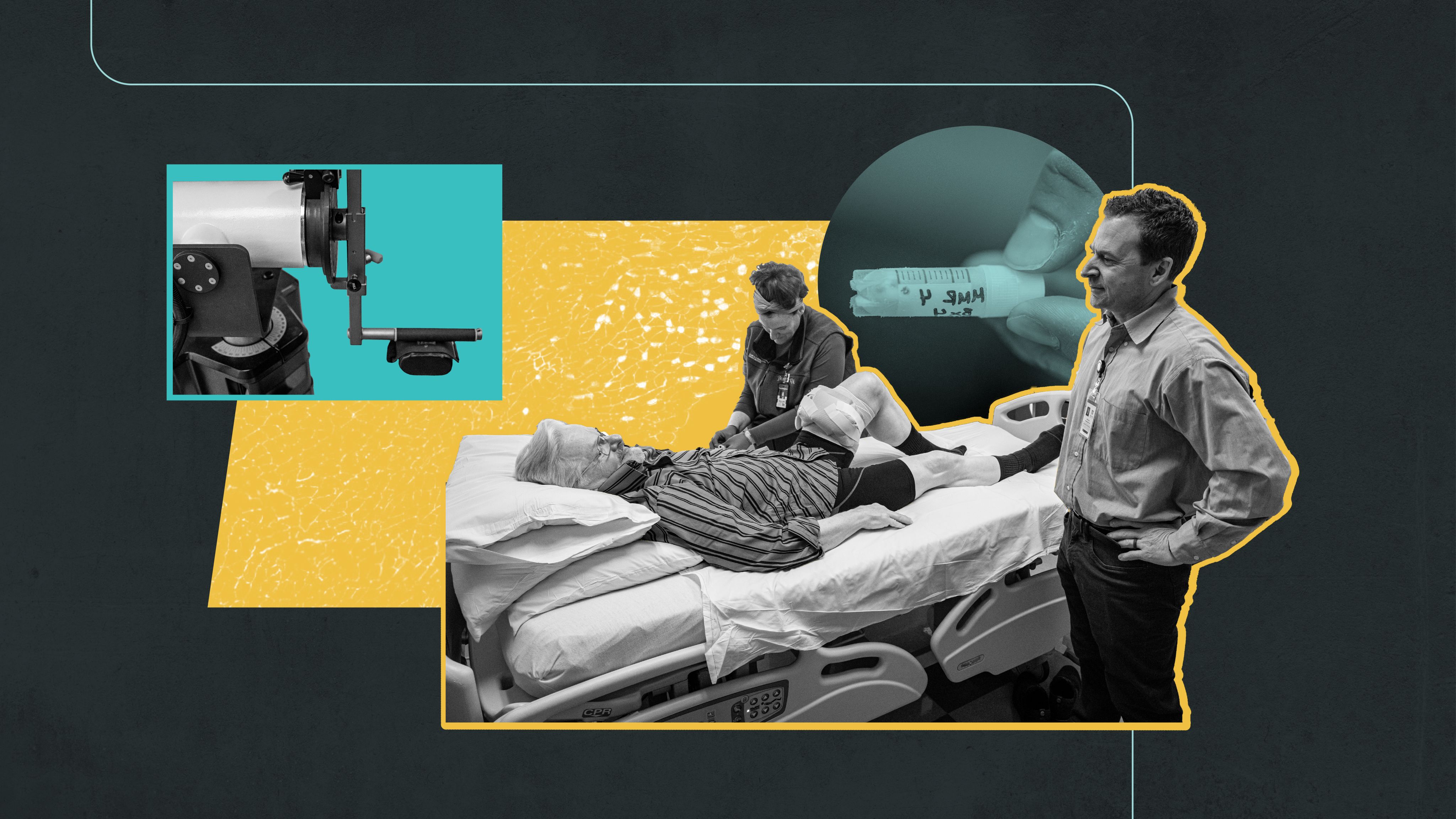Pioneering the Future
The Science of Healing

February 17, 2025
Heart failure, muscle wasting with age, and postpartum depression are distinct medical challenges with something in common: they are among the many health conditions that could see innovative solutions thanks to advances made at University of Utah Health.
- Scientists here are leading the charge toward cardiac gene therapies by figuring out how to correct the structural disorganization that disrupts failing hearts, an advance that could benefit the 1 in 4 Americans who will develop heart failure.
- By repurposing a widely used drug, they aim to protect older adults from muscle loss, addressing a significant health issue tied to disability and up to $40 million in healthcare costs in the U.S.
- And by connecting with pregnant and postpartum patients online, they are bringing mental health care to people in Utah who might otherwise struggle to access it.
U of U Health scientists are finding and addressing the very roots of these problems, opening paths to novel interventions that could improve the quality of life for millions.

Gene Therapy to Restore Failing Hearts
A cutting-edge gene therapy could restore heart function for the 1 in 4 Americans who will develop heart failure.
Millions of people worldwide live with heart failure, meaning their hearts can’t pump blood as well as they should. Heart failure is a chronic, progressive condition, and as the heart weakens, everyday activities can become difficult as the body struggles to get the oxygen it needs. Some patients eventually require a heart transplant or a surgically implanted device like a left ventricular assist device to survive.
But at U of U Health, researchers are leveraging the latest scientific advances to address the root of the problem. They are learning how the molecular organization of heart cells changes as heart failure progresses. And they are using that knowledge to develop a new kind of treatment: gene therapy.
TingTing Hong, MD, PhD, associate professor of pharmacology and toxicology, and Robin Shaw, MD, PhD, director of the Nora Eccles Harrison Cardiovascular Research and Training Institute, have zeroed in on a protein that is critical for coordinating the heart’s rhythmic contractions. They found that the protein, cBIN1, helps organize molecules, channels, and transporters on the outer surface of the heart’s muscle cells. Levels of cBIN1 tend to decline with heart failure, worsening the condition.
To remedy the deficit, Hong, Shaw and colleagues have developed a gene therapy that ramps up production of cBIN1. “If we can just bring back this protein by gene therapy… then we can rescue their heart function,” Hong says. “That will really improve both survival and the life quality of patients with heart failure.”
Remarkably, they found this approach can improve heart function in laboratory animals with heart failure. The therapy increases the amount of blood the heart can pump and dramatically improves survival. The discovery paves the way for bringing the innovative therapy to patients.

Protecting Muscles to Speed Their Recovery
A medication might help older adults recover from debilitating muscle injuries and age-related muscle loss.
As we get older, it can be harder to bounce back from injury or prolonged periods of bed rest. That’s partly because it takes older adults longer to rebuild muscles that have atrophied due to disuse. The resulting weakness can limit mobility and put people at risk for falls, hospitalization, and even chronic disease. Encouragingly, it may be possible to protect older adults against muscle loss with a drug that millions of people already take.
That drug, metformin, helps to control blood sugar. Commonly used to treat diabetes, it also changes the behavior of cells that can influence muscle regeneration and growth. When Micah Drummond, PhD, professor of physical therapy and athletic training, and colleagues gave metformin to people over the age of 60 before and during a five-day period of bed rest, those individuals experienced less muscle atrophy than people who spent the same five days in bed but took only a placebo. Participants’ muscles after bed rest also had less fibrosis—a hardening of the tissue that can interfere with function—when they took metformin. Drummond and his colleagues think that’s because metformin limits senescence, a state in which cells tend to secrete factors that promote inflammation.
“As you get older, it becomes harder for your body to clear senescent cells, and they accumulate,” he explains. “That’s one reason recovery is much slower for the elderly after periods of disuse.” Drummond and his team are excited about the prospect of deploying metformin, a drug that is considered inexpensive and safe, to get people back on their feet faster.

Easy-Access Care for Perinatal Depression
A data-backed telehealth program is helping prevent perinatal depression and bringing treatment to parents in Utah, anytime, anywhere.
The debilitating sadness and anxiety of perinatal depression can strike during pregnancy or emerge in the weeks or months that follow. The condition, which affects up to 20 percent of people who are pregnant, can make even routine tasks and self-care a challenge, not to mention caring for an infant.
“I felt exhausted, overwhelmed, and defeated all the time,” says Kylee, a Utah mom who experienced severe depression and anxiety after the birth of her second daughter. Treatment with medication or psychotherapy usually helps, but most people with perinatal depression never receive the care they need. Connecting with health care providers and mental health professionals can be particularly difficult when clinics are far away, as is often the case in rural areas.
Recognizing how hard pregnancy can be and the difficulties of fitting in therapy while raising a new baby, Gwen Latendresse, PhD, CNM, a researcher at the College of Nursing, developed ways to make mental health resources easier to access.
She developed a telehealth program where participants connect once a week for an hourlong session based on cognitive behavioral therapy and mindfulness-based practices. She and her team evaluated the program in a study of nearly 50 women who were experiencing or at high risk for perinatal depression and found that they benefitted from the flexibility that online therapy offered. “Women didn't have to worry about transportation or finding childcare,” Latendresse says. “They could stop for an hour and join the group from wherever they were.” After just eight sessions, women at risk for perinatal depression remained stable, and those who began the program with depression showed an improvement in their symptoms.
With these promising results, Latendresse expanded their reach, bringing a prevention and treatment program to rural health districts and across the U of U Health system. Using U of U of Health's online patient education portal, YoMingo, patients can now engage in “on-demand” modules for around-the-clock access. And tools integrated into electronic health records automatically notify health care providers about a patient’s mental health status, and provide resources directly to them and the patient.
Latendresse is optimistic that telehealth and electronic platforms can bring effective mental health support to all patients, regardless of where they are.
Pioneering the Future: Stories of Discovery & Innovation at University of Utah Health
Produced by Kyle Wheeler & Julie Kiefer
Written by Jennifer Michalowski
Editing by Julie Kiefer & Nick McGregor
Layout by Kyle Wheeler
Designs by Modern8
Photography by Charlie Ehlert

